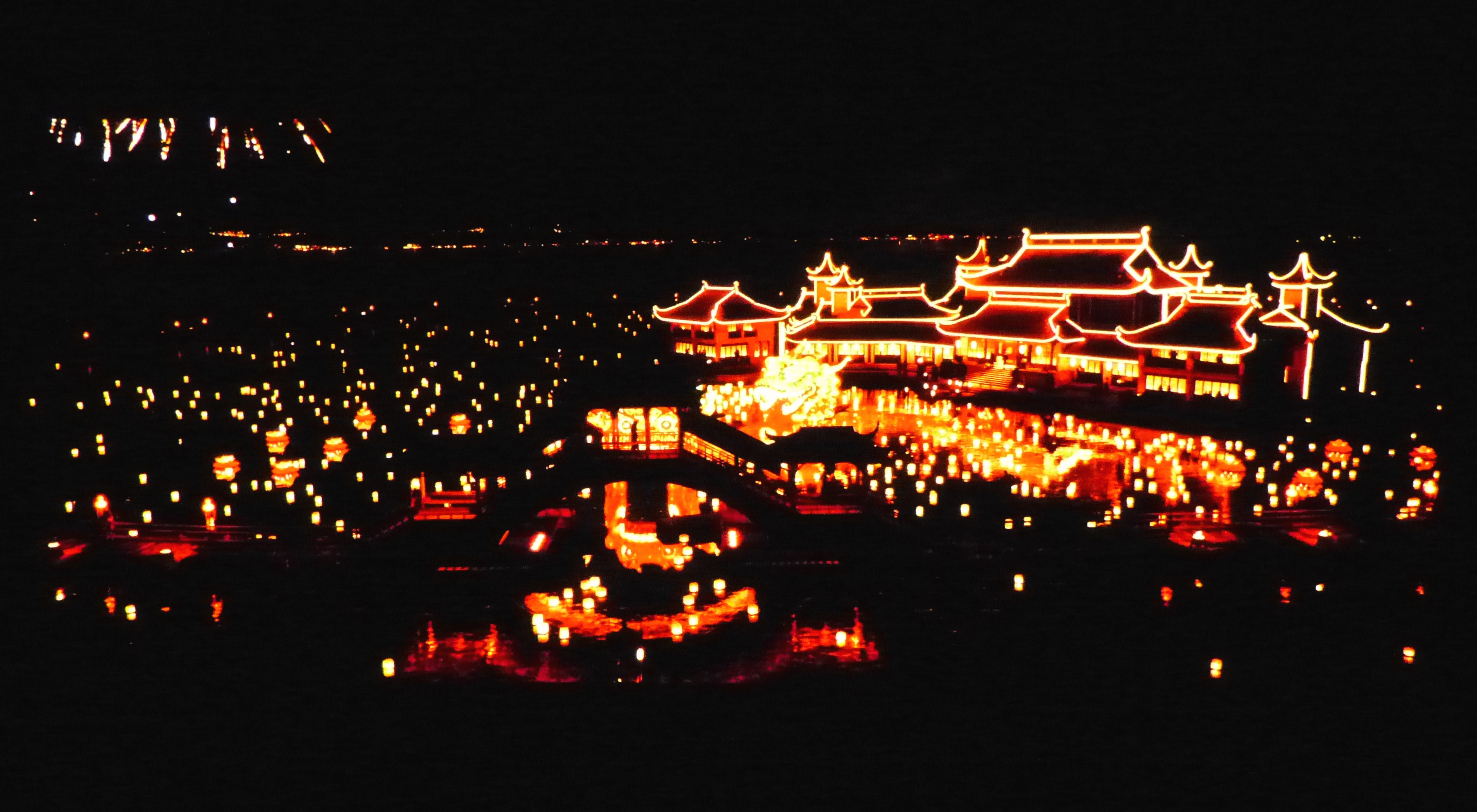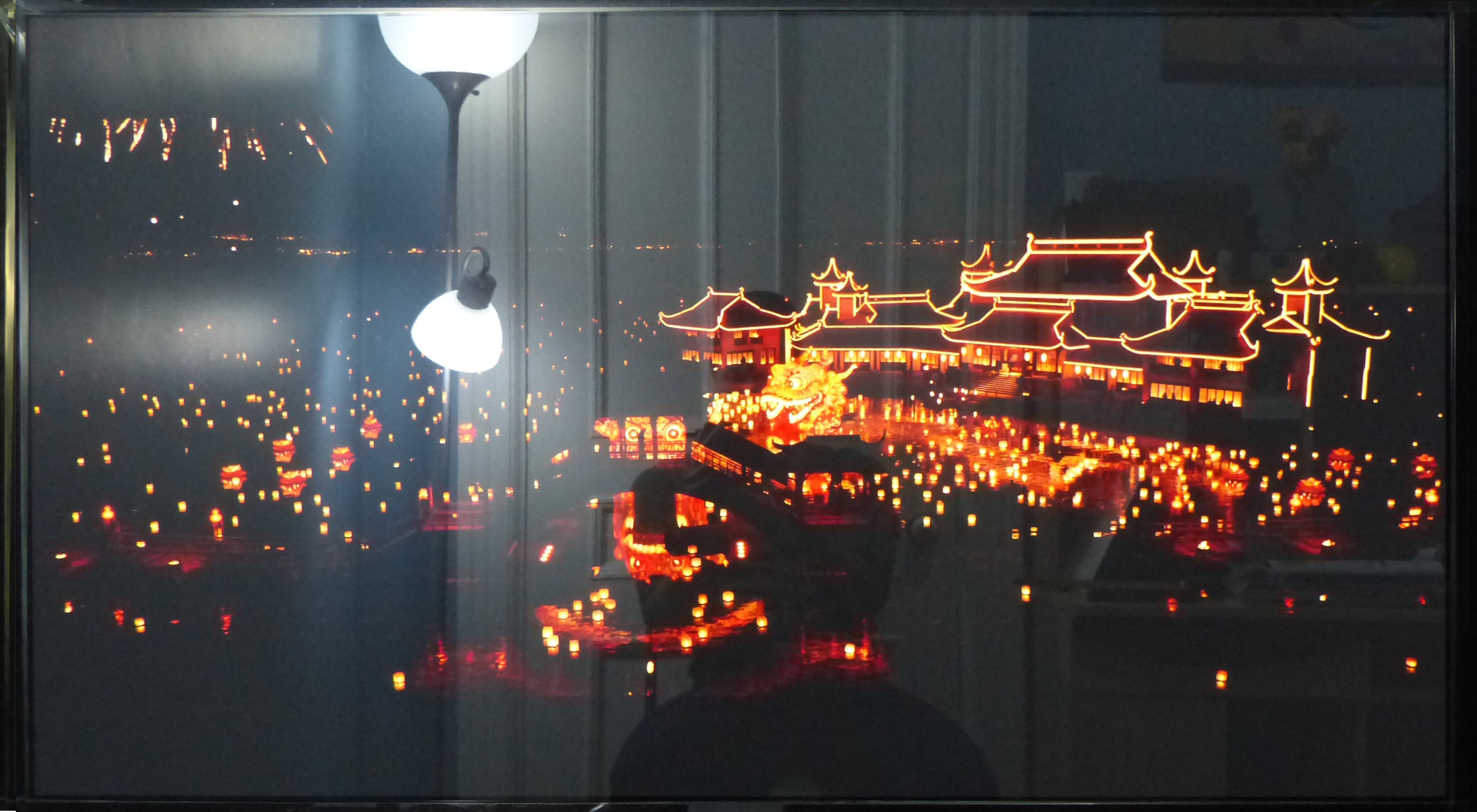Lcd or Plasma Has Easy to Fix the Screwn
How TVs Work
Before explaining the differences between each technology, it's important to understand how each TV displays an image.
Plasma
Plasma TVs contain tiny pockets of gas, and when a voltage is applied to them, they turn into a plasma state. The voltage then strikes the mercury within the plasma to emit ultraviolet (UV) rays, which pass through phosphor cells to produce an image. Each pixel in the TV contains three phosphor cells: red, green, and blue, and these three colors combine to produce a color. Essentially, plasma TVs don't require a backlight, and each pixel is self-emissive as it produces its own light.
LCD
Unlike plasma TVs, LCD TVs use a backlight. Initially, LCD TVs used Cold-Cathode Fluorescent Lamp (CCFL) as their backlight. These are long tubes that are placed horizontally across the screen behind the LCD panel. When the light is turned on, it applies a voltage to the pixels, which makes them rotate a certain way to allow light through and produce an image. When it wants to display black, the pixels are rotated to create an opaque screen so that light doesn't get through. This is what makes them different from plasma TVs because each pixel isn't self-emitting.
LED
Light-Emitting Diode (LED) TVs are the same as traditional LCD TVs, but instead of using CCFL backlights, they use many smaller LED lights. It produces an image the same way as a regular LCD TV because it still uses an LCD panel, but it has more control over the backlighting. The LEDs can be placed along the edges, which is called edge-lit LED, or all over the back panel, which is either called direct LED or full-array backlighting. You can see the differences between LCD and LED TVs below.
It's also important to note LED is simply a marketing term used by manufacturers to describe their backlight. They're still technically LCD TVs, but since calling them LED is so common now, we even label them as LED, and we'll continue to do so throughout this article.
Learn about differences between full-array and edge-lit local dimming
 LCD backlight
LCD backlight
 LED full-array backlight
LED full-array backlight
 LED edge-lit backlight
LED edge-lit backlight
The Main Differences
Plasma and LED TVs each present their own advantages and disadvantages in terms of picture quality, price, build, and availability. It's generally thought that plasma produces a better picture quality due to their superior contrast ratio, but LED TVs became more popular because of other factors, like a lower cost and greater availability.
Below you can see the differences in picture quality between two older TVs from 2013. It's clear the plasma was better at the time, but LED TVs have also gotten better since then, so picture quality has greatly improved.
 Plasma TV - Samsung N5300
Plasma TV - Samsung N5300

LED TV - LG LN5400
Contrast ratio
Contrast ratio was one of the main advantages and selling points of plasma TVs. Since each pixel emitted its own light, it simply turned itself off when it wanted to display a black image. This allowed the TV to display very deep blacks, but because there was always a bit of charge left in the plasma, it still wasn't a perfect black level.
On the other hand, LED TVs can't achieve a perfect black level because the backlight is always on. However, technology has evolved to greatly improved the contrast of LED TVs, even to the point where it's also as good as what plasma once was. There are two main types of LCD panels in TVs: Vertical Alignment (VA) and In-Plane Switching (IPS). VA panels produce a better contrast than IPS, and high-end TVs also have local dimming features that turn off certain zones of the LED backlights. Still, you won't get a perfect black level, but most modern LED TVs produce such deep blacks that even in a dark environment it looks like perfect black levels. For reference, plasma TVs had a max contrast of about 4,000:1, according to DisplayMate.com, but some recent LED TVs can reach a contrast of over 20,000:1 with local dimming enabled, like the Samsung QN90A QLED.
Learn more about contrast ratio
Brightness and reflection handling
LED TVs are a clear winner here, and it's one of the reasons why they surpassed plasmas in terms of popularity. LED TVs get significantly brighter, so they can fight glare from light sources easier. Additionally, plasma TVs had to use glass on their front panel, which caused intense glare if you had any lamps or windows around the TV. LED TVs can use a coating on their glass panel to help reflect and diffuse light, making it a better choice for well-lit rooms.
Plasmas were designed for dark-room viewing, but since most people don't have dedicated home theater setups and often watch with a few light sources around, they weren't that useful. As you can see below, the plasma TV had pronounced reflections, to the point where it's even hard to see the image, and instead you're watching yourself watch TV. Reflections are still noticeable on an LED TV, but at least you can see the image.
 Plasma TV - Samsung N5300
Plasma TV - Samsung N5300

LED TV - LG LN5400
Learn more about peak brightness and reflection handling
Viewing angle
Pixels on plasma TVs emitted light in all directions, creating extremely wide viewing angles, much better than most LED TVs. This means that the image remained accurate when viewing from the side, which was great for watching sports or a show with a few people. Out of the two main panel types for LED TVs, IPS has wider viewing angles than VA panels, but it's still not as good as plasma.
TV manufacturers have tried different technologies to improve viewing angles on VA panels. Samsung has an 'Ultra Viewing Angle' layer, and Sony uses their 'X-Wide Angle' technology to increase the viewing angles, both at the cost of a lower contrast ratio. It's still not as good as plasma, but they're wide enough for watching TV in a fairly large seating area.
Below you can see the differences in viewing angles between a plasma and a VA panel. These TVs were tested on different test benches, so you shouldn't directly compare the videos, but we included them to give you an idea of how each technology affects the viewing angle.
Plasma TV - Samsung N5300
VA Panel - Hisense H9G
Learn about viewing angle here
Response Time and refresh rate
Plasma TVs were great for motion handling, like with sports and video games due to their quick response time. Since each pixel had to retain a certain charge at any given moment, it was ready to display an image almost instantly. This meant fast-moving scenes looked crisp and smooth, with no motion blur behind them. However, for LED TVs, it can be a toss-up; some lower-end models have a slow response time that causes motion blur, while other high-end TVs have a really fast response time.
Some LED TVs also use Pulse Width Modulation to dim their backlight, and this causes the backlight to flicker, which may create image duplication in fast-moving scenes. This can be particularly annoying, especially if you're watching sports with fast-moving content.
In terms of refresh rate, plasma TVs had a higher internal refresh rate, up to 600Hz, while LED TVs tend to be 60 or 120Hz. However, the refresh rate depends on the content, and since most content doesn't go past 120 frames per second, having a higher refresh rate TV isn't very useful.
Learn more about motion handling
Uniformity
Screen uniformity is another area where plasma TVs win. Since they didn't have a backlight, they could evenly control each pixel. LED TVs can suffer from uniformity issues, like darker edges or Dirty Screen Effect in the center, because the backlight output may not be even across the panel. However, this is only really noticeable when watching content with large areas of uniform color, like a hockey or basketball broadcast, or if you're going to use the TV as a PC monitor. It shouldn't be noticeable with other types of content, and since uniformity can vary between units, you shouldn't worry about it too much.
Learn about gray uniformity here
Burn-in and image retention
One of the reasons plasma TVs didn't last too long at the top of the TV world is because of their risk of temporary image retention and permanent burn-in. Plasmas lose their brightness over the years, and in the worst case, would have permanent burn-in with certain colors staying on the screen, as you can see here. Even after watching content with static elements, like the news, for an extended period, the outline of the static elements would stay on the screen for a few minutes after changing the channel.
These problems are particularly annoying, especially if you watch a lot of TV. There was no way to help reduce this issue, and after a few years, depending on how much you used the TV, your plasma would need replacing. LEDs don't suffer from this same permanent burn-in, so you won't have to worry about replacing your LED TV down the line because of burn-in.
Learn more about image retention
Thickness, weight, and Power
Due to their different technologies, LED and plasma TVs are built differently. Plasma TVs tended to be heavier and thicker because the panel itself was larger. Although plasmas were the first flat-screen TVs available at a consumer level at the end of the 20th century, LCD TVs quickly became even thinner, easier to package, and lighter to carry from the store to your house. These days, LED TVs are as thin as 1", like the Samsung QN85A QLED.
Plasma TVs also required a lot of power to work and tended to get very hot. With the growth of environment-friendly consumer practices, it became clear LED TVs would win out since they required a lot less electricity, and in a way were better for the environment.
Size, availability, and resolution
Both plasma and LED TVs were made with larger sizes, but LED had a slight advantage because they were also made in displays smaller than 32 inches, like with monitors. Although small TVs are rare now, you can still find a basic 28 or 32 inch TV for a kitchen or bedroom with an LED panel. Plasma TVs weren't made that small. LED TVs also cost less to produce and are cheaper on the market, so at the end of the day, the lower cost drove LED sales.
When 4k TVs started to become the norm over 1080p and 720p TVs in the mid-2010s, manufacturers started to produce 4k LED TVs, while plasma TVs were stuck at 1080p. This presented a major advantage for LED TVs, as a higher resolution helps create a crisper image, and this essentially was the nail in the coffin for plasma TVs. Since manufacturers were focused on making 4k LED TVs, plasma TVs became less available, and by 2014, Panasonic, LG, and Samsung all stopped their plasma production. LED TVs surpassed plasma sales in 2007, and they haven't looked back since.
Learn more about resolution
Other problems with plasma
There were a few other problems that contributed to the decline of plasma TVs. First of all, plasma TVs didn't work at high altitudes because of the change in air pressure with the gasses inside. They would create a buzzing noise, and the image wouldn't look the same, so this could have been problematic if you lived at a high altitude. LED TVs can be used at any altitude; you shouldn't use them in extreme cold or extreme heat, but this is standard practice for any electronic, and temperature is easier to control than your altitude. Also, plasma TVs emitted a radio frequency that could have interfered with other devices around, like if you had a radio in the same room. Each of these issues are simply inconvenient for most people.
Should You Replace Your Plasma?
The simple answer is yes, but it doesn't mean you should go out tomorrow and buy a new TV just because you read this article. If you aren't experiencing any issues with your plasma, then you probably don't need to replace it right away. However, if you notice your plasma is starting to show some signs of permanent burn-in, it's probably a good idea to get a new TV before the burn-in becomes worse.
There could be other advantages if you upgrade your TV, like technological advancements and a higher 4k resolution. Modern TVs come with a built-in smart system, which isn't something that most plasmas had, and this allows you to directly stream your favorite content without the need for an external streaming device. As mentioned, LED TVs aren't very costly, and you can easily find the best 4k TVs for under $500.
OLED vs Plasma
At the same time that plasma TVs met their end, OLEDs grew from the ashes of their predecessor. After LG released the first commercially available 55 inch OLED in 2012, it soon competed with LED TVs. OLED, which stands for Organic Light-Emitting Diode, is different from plasma, but shares many of the same characteristics, while also avoiding some of plasma's downfalls.
OLEDs use self-emissive pixels, but what sets them apart is how the pixels completely shut off, creating an infinite contrast ratio and perfect black uniformity. This is an improvement from plasma because it was never able to reach those perfect blacks. OLEDs also have wide viewing angles and a near-instant response time like plasmas. Sadly, they don't get extremely bright, but they're still better for well-lit rooms than plasma because they get a bit brighter and have much better reflection handling. Also, OLEDs have the same burn-in risk as plasma, but this only happens with constant exposure to the same static elements, and we don't expect it to be a problem for people who watch varied content.
Another advantage for OLED is how thin they are, especially compared to plasma, and they aren't as heavy. For example, the LG GX OLED is a TV designed to sit flush against the wall and it's only 0.94" thick!
Compared to LED competitors, OLEDs are much more costly, and even though they offer superior picture quality, LEDs are still the favorite. Also, LED TVs are available in smaller sizes, while the smallest OLED TV we've tested is 48 inches. LEDs are generally the better choice for well-lit rooms since they still get much brighter, but OLEDs are a fantastic choice for dark room viewing.
Learn more about OLED vs LED
Conclusion
Although plasma TVs once dominated the TV market for a short time at the turn of the 21st century, their disadvantages outweighed their advantages, and LED-backlit LCD TVs soon held the market share of sales. There were a few reasons for this, like burn-in issues, low peak brightness, and a thick and heavy design compared to LED TVs. Despite plasma TVs' superior overall picture quality, improved contrast, and very quick response time, it wasn't enough to convince consumers to keep buying them once 4k LED TVs became readily available. If you still have a plasma, it's likely you'll need to replace it within the next few years, and you'll probably buy a new LED TV.
Source: https://www.rtings.com/tv/learn/lcd-vs-led-vs-plasma
0 Response to "Lcd or Plasma Has Easy to Fix the Screwn"
Post a Comment